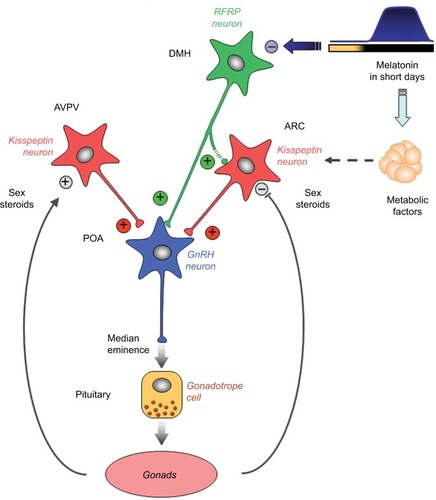Figures & data
Figure 1 Interaction of hypothalamic factors and peripheral signals on puberty onset.

Table 1 Examples of the effects of exogenous melatonin administration on the timing of puberty in lambs, gilts, rats, and male Siberian hamsters
Figure 2 Working model indicating how the photo-inhibitory melatonergic message in short day conditions is integrated in the hypothalamus to further regulate the gonadotropic axis in the male Syrian hamster.

